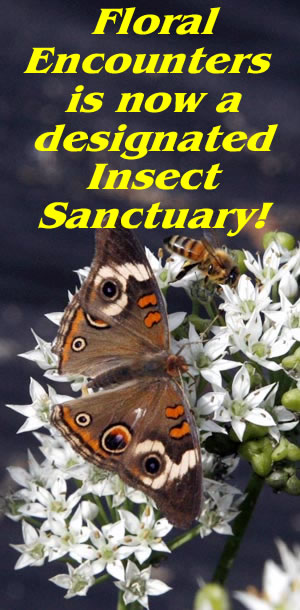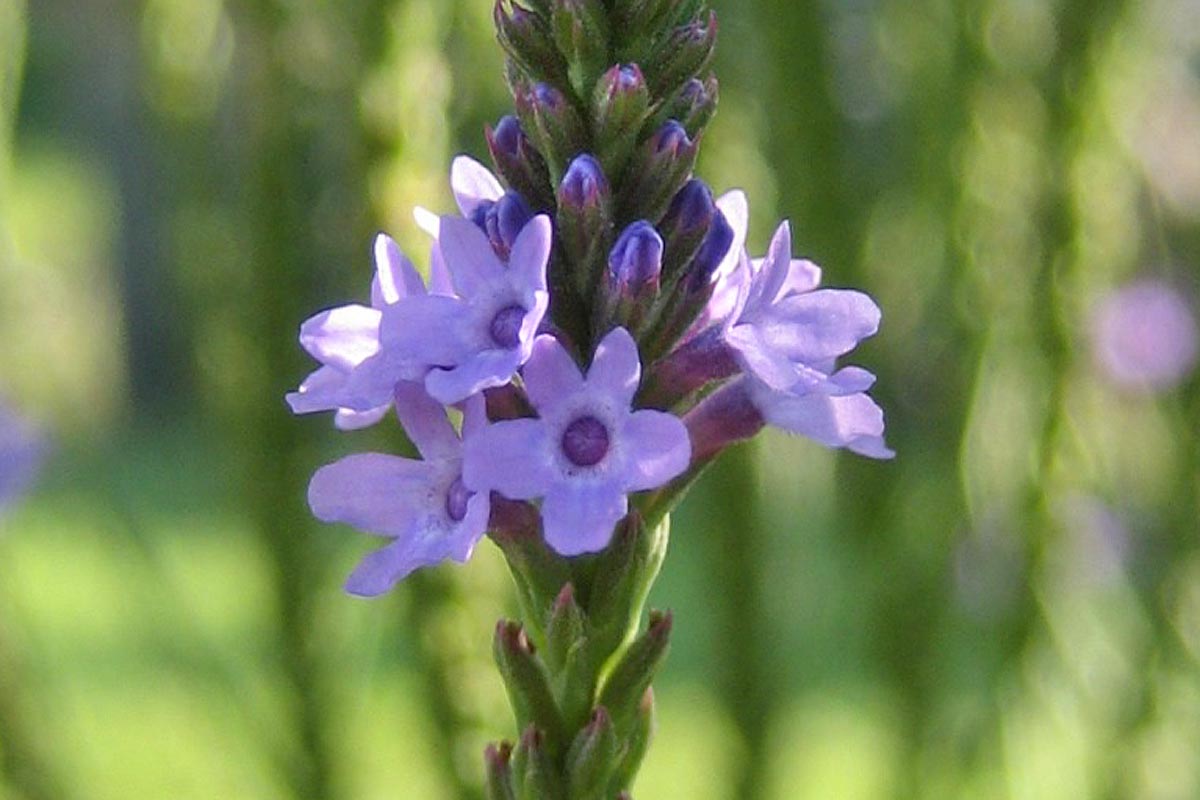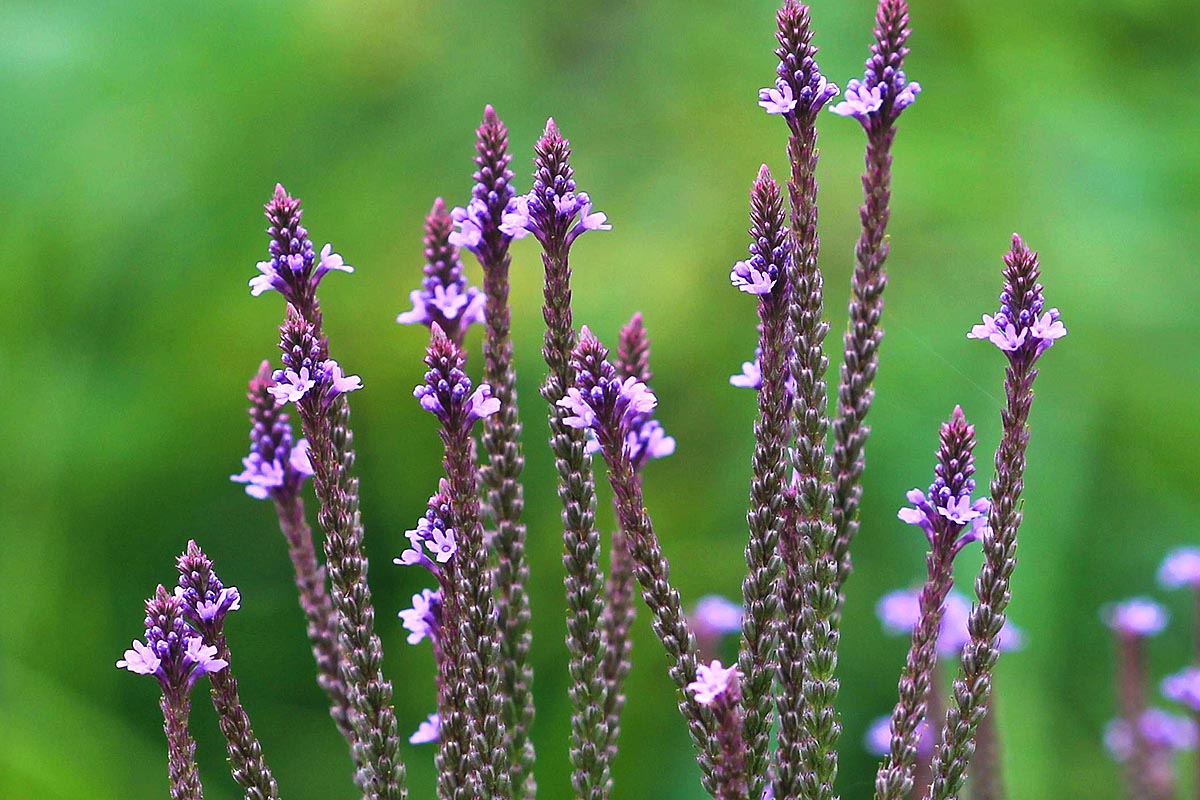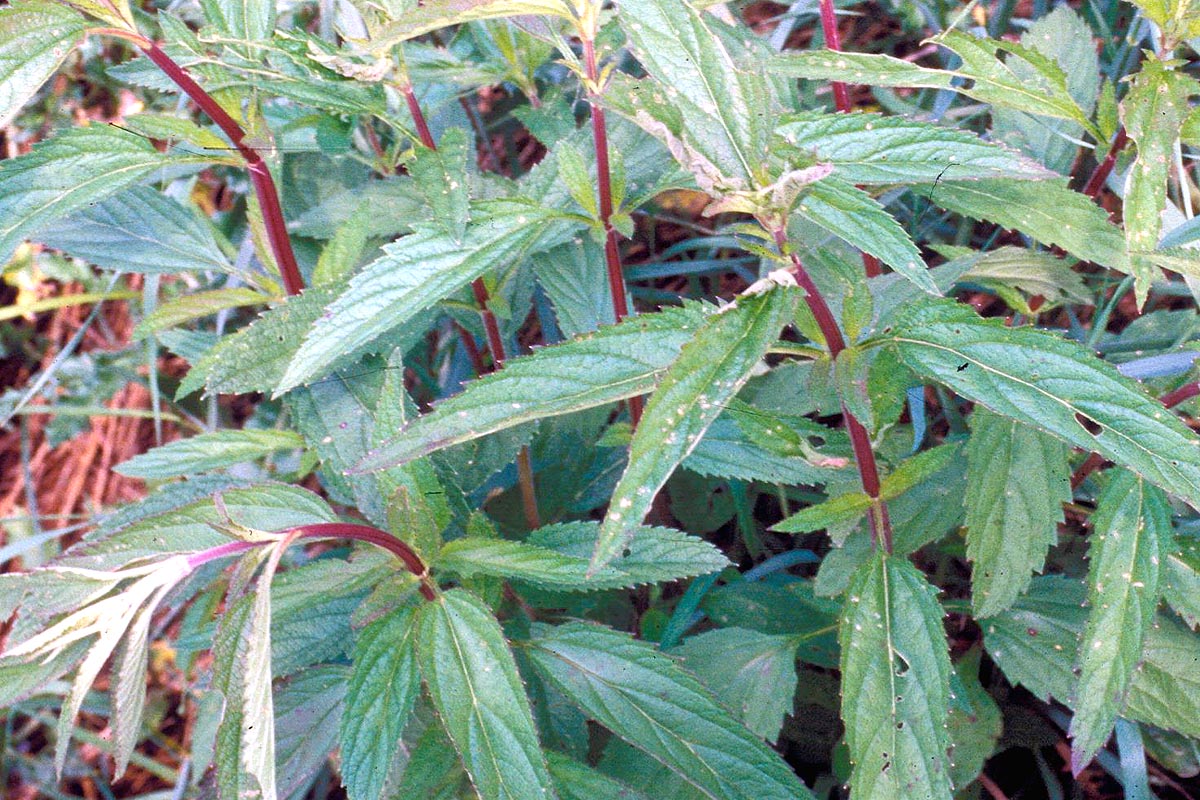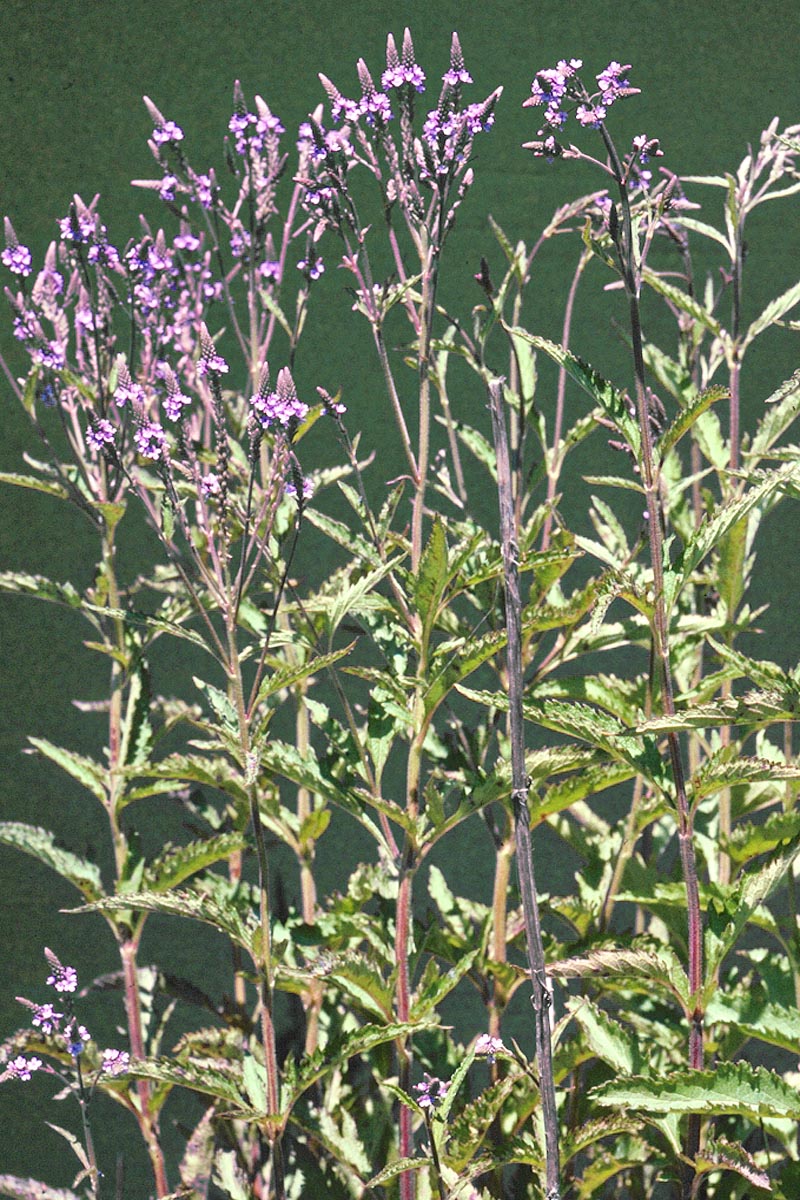The rich nectar and prolific pollen make this a magnate for all kinds of butterflies, as well as hummingbirds and bees. This is a tall Native American short lived perennial for areas with good moisture and wont do well in dry soils or totally waterlogged either. Ones that flood occasionally are ideal. Blue vervain produces a mass of pencil thin branches often compared to a candelabra. While the flowers are small they are prolific starting at the base of the flower spike they bloom up the stem which elongates as the plant matures. This means its in bloom for a month, sometimes two depending on your zone. Its hardy from 3-9 and will mature faster in warmer zones. Living 2-4 years it will spread by rhizomes or seed so it appears to live forever Very easy to grow from seed but it does need a little cold stratification before it germinates but that's easy to do. Grows rapidly, dies down in winter so works well in a mow-it-down gardens. Leaves contain a bitter substance so wildlife dont eat it, but its essential to the beautiful buckeye butterfly caterpillars. Usually grows to about 4 feet (1.2m) but can be as much as 6 feet (1.8m) so its a back border or meadow plant. Makes it easy to see from the house even at a distance.
These still stems begin branching after they reach about 2 feet (61 cm) and leaving the leaves below form a dense cluster of dense packed multi branched flower stems which continue to elongate as the plants mature. The flowers begin blooming in a whorl around the stem starting at the base of the flower spike and moving upwards. Flower spiked can be over five inches long and as thick as a pencil (about 0.25 inches (5 mm)) and produce blooms over a long period. Each flower is about 0.25 inches (5 mm) across with five petals that are fused at the base forming a tube. Inside the tube is a short style and four small stamens. Flowers are blue to violet in color and produced prolifically across many branching flower spikes so blooming can last up to two months depending on zone.
After each flower drops it is replaced by reddish brown triangular-convex "nutlets" four to a each 'flower'. Stems will persist through the winter unless cut down and will self seed if left unchecked.
Seeds need light to germinate. Whatever method you choose make sure the seeds are surface sown or all your preparation is wasted.
Use a good sterile seeding mix to start seeds. This helps prevent weeds and molds that can cause issues with stratification if non sterile mixes are used.
Seeds are small so using the egg box method to start seeds inside takes up less space in your refridgerator. Using a transparent plastic egg box for these seeds allows them to be taken from the refridgerator and used as a mini greenhouse until the seeds germinate. Do not add too many seeds per egg dimple so they are easy to transplant after germination.
Once stratification is complete remove seeds and place in warm well lit area, a south facing window or a grow light are ideal. Keep temperatures between 60-80 F (15.5-26.6 C), germination usually occurs within 14-30 days sometimes vervain is stubborn so be patience. Keep soil moist at all times. This is especially true if using egg boxes as they dry out quickly. Water daily.
Direct sowing where you want the plants to grow is also possible. However since the seeds need to be surface sown they are at risk from being eaten by birds or rodents so we do not recommend this method unless you have a lot of seed and only need a few plants.
Water. Blue Vervain also likes moist soil, its ideal for moist meadow settings or water meadows that flood occasionally, close to a body of water where it can keep moist. When established it can tolerate a mild drought but not extensive and will need supplementing. In dryer soils running a soaker hose along the root line of vervain plants and watering regularly when it does not rain will produce the best results.
Light. Depends on zone. In colder zones 3-6a full sun is required. In more southern zones it can tolerate some shade especially from noon sun but only dappled not deep shade.
Soil. It likes soil that will hold water, so does not do well on sandy soils. If you soil is well draining add a high level of organic material in the area chosen for blue vervain and top dress yearly to keep the moisture levels high. Its pretty tolerant of all other soils but its not a bog plant, while it can tolerate some flooding it does not live in standing water.
Spacing. Plants do best with at least 2 feet between them. This provides room for the branches to spread and give the best display and provide enough root spread for good water absorption.
Birds love to eat the seeds and often cover the plants when seeding offering delightful wildlife viewing.
While rabbits may chew on a little foliages especially when plants are young or just emerging most browsers do not bother it because of its bitter taste. This does make it stand out in pastures as cattle wont eat it leaving it to stand alone and noticeable.
WARNING. Blue vervain can, interfere with blood pressure medication and hormone therapy, and large doses cause vomiting and diarrhea.
The flowers were dried and then powdered to create a 'snuff' that was sniffed to help combat nose bleeds.
There are also reports of it being used as an antidote for American Pokeweed poisoning but details of use are scarce.


